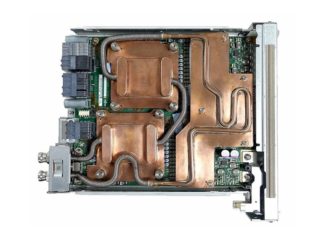
The oil barons of the Middle East have been trying to diversify out of carbon fuels and into other parts of the global economy for decades, but artificial intelligence may be a game that only hyperscalers, cloud builders, and Middle East sovereign wealth funds can play at the highest levels and maybe, in the long run, only the latter can tilt the AI playing field to their advantage.
Even the largest national governments on planet cannot throw the kind of money at the next wave of AI like Saudi Arabia, Kuwait, the United Arab Emirates (with Abu Dhabi and Dubai being the two important ones among the seven emirates), and Qatar can easily do.
And frankly, are doing, because the price of a barrel of oil is not as high as it has been and it is time to make money some other way.
The UAE has made some big splashes with their G42 and MGX investment arms, doling out huge wads of cash to Cerebras Systems to build infrastructure in the Middle East and train Arabic models and OpenAI’s Stargate Project, which has Softbank doing compute engine stuff and Oracle doing cloud stuff but MGX footing most of the $500 billion bill to create infrastructure for OpenAI over the next four years to what unknown leverage for the UAE.
And today, Saudia Arabia, the largest and richest oil producer in the world, ruled by Mohammed bin Salman bin Abdulaziz Al Saud, the crown prince and the prime minister of the country and also the chairman of the board of directors of the Public Investment Fund (PIF) of Saudi Arabia, is throwing its wealth into the ring.
The last ranking we can find of the sovereign wealth funds in the Middle East came out in Arab News in March 2024, and it put the PIF at $925 billion, up 55 percent from 2022’s fund value. The Abu Dhabu Investment Authority had $993 billion of assets under management as 2023 came to a close, and if you add the three big Abu Dhabi funds together, they totaled $1.4 trillion. If you add all of assets under management by the sovereign funds of the Gulf States together, they were over $4 trillion as 2023 came to a close. Not all of this is liquid, of course, which is ironic given the nature of the source of the wealth, but clearly the Gulf States can invest at a very high level.
Just to give you the contrast, in their most recent quarters, Microsoft, Google, Amazon, and Meta Platforms had a combined $340 billion in cash and investments on hand. This is a fraction of the wealth of the Gulf States, which is why we see the GPU and APU makers and now their customers sucking up to them. It is also something that the Trump administration was not eager to talk about when talking about the Stargate Project investment. Larry Ellison of Oracle, Masayoshi Son of SoftBank, and Sam Altman of OpenAI were at the White House, but the real money behind the Stargate Project comes from Sheikh Tahnoun bin Zayed Al Nahyan, who is the son of the founder of the UAE and also its national security advisor, deputy ruler of Abu Dhabi, and brother of the president of the UAE, who is also is chairman of G42 and also chairman of MGX.
This time around, President Trump is visiting Saudi Arabia trying to drum up investment in the United States just as PIF is announcing Humain, which Crown Prince Mohammed bin Salman’s PR team characterizes as a “global AI powerhouse,” which looks to be a gussied up version of Aramco Digital, which was an AI startup inside of the Saudi Aramco oil giant that was started in October 2023. Tareq Amin, who was chief executive officer at Aramco Digital and held the same post at Japanese telecom company Rakuten Mobile before that, is also CEO at Humain.
As might be expected, Humain, with PIF’s backing, is spreading some money around to Nvidia, AMD, Groq, and probably others we have not found yet.
The PIF announcement of Humain, which we will never capitalize just as we do not Nvidia, is long on pronouncements but short on details. But the idea is to invest in the AI ecosystem and to try to make Saudi Arabia “a regional and global AI hub for strategic sectors, including energy, healthcare, manufacturing and financial services.” Humain promises to “offer one of the world’s most powerful multimodal Arabic large language models,” but it is not clear if it is going to be developing it or working with one of the big model makers to do so. Humain could just create an Arabic version of a Llama 4 model if it wanted to. . . .
The kingdom is not the only one spending money. Amazon Web Services was already building a region, which it called an AI Zone, in Saudi Arabia and disclosed back in March 2024 that it was shelling out $5.3 billion to build datacenters and cram it full of servers (presumably both GPU machines and Trainium and Inferentia XPUs) and UltraCluster Ethernet networking. The AI Zone will have additional investment above and beyond that being spent by AWS, according to the statement put out by AWS, but it is not clear if Amazon or PIF is doing it. It is funnier if AWS is footing the entire bill, but it also gets to collect much more money in cloud usage fees (call it $25 billion or so) over the next five years. The AI Zone, presumably located in the capital city of Riyadh, will be up and running in 2026 and will include AI platform services such as SageMaker, Bedrock, and Q.
Nvidia said in its statement that Humain will also be building AI infrastructure over the next five years in Saudi Arabia that will have a combine 500 megawatts of power draw. The first phase of deployments by Humain will be a cluster with 18,000 Grace-Blackwell GB300 systems interlinked with InfiniBand interconnects. This sounds like a training cluster, not a cluster based on GB300 NVL72 rackscale systems that are aimed at inference. (But that may be a wrong conclusion to jump to based on the press release, which was vague.) Nvidia added that Humain would be acquiring “several hundred thousand of Nvidia’s most advanced GPUs over the next five years.”
AMD put out its own statement saying that it would be working with Humain (and therefore PIF) to build AI datacenters based on its compute engine technology in Saudi Arabia and the United States. AMD added that AMD and Humain would “invest up to $10 billion to deploy 500 megawatts of AI compute capacity over the next five years.”
We strongly suspect that there are not two 500 megawatt capacity deals, but one 500 megawatt deal that Nvidia and AMD are sharing, and quite possibly also with Groq. In any event, AMD says that initial deployments of AI clusters have already started in key regions around the globe and it will work with Humain to activate multiple exaflops of capacity in 2026. (That sounds like Instinct MI400 to us.)
Back in February, Saudi Arabia agreed to spend $1.5 billion to expand an AI inference datacenter in Dammam, which is northeast of Riyadh on the Persian Gulf, that the kingdom set up in December 2024 with Groq, which has pretty zippy inference (just like Cerebras does).
It is entirely unclear what PIF and Humain are actually doing and how much money it is really investing. Just like it is not clear how much Saudi Arabia actually invests in the United States when it promises presidents that it will do so. President Trump wants to raise $1 trillion in investments for America on this current trip to the Middle East, and was touting $600 billion in deals today when it looks like there were 145 deals worth more than $300 billion announced today at an investment forum in Riyadh. Of this, $142 billion is for military equipment.
In the first Trump administration, Saudi Arabia promised $450 billion in investments in the United States, but spent more like $92 billion. We suspect the Obama and the Biden administrations had similar luck collecting on promises, but were unable to find data on that.
We will watch and see what the kingdom actually does, and the effect it has.
That leaves us with this 500 megawatt investment statement. How many GPUs will that be? Let’s use the GB200 NVL72 system design from Nvidia as a touchstone. All in with storage and networking, two rows of this system runs about 1.16 megawatts for servers, switches, and storage based on what Nvidia tells us. Such a machine has 576 GPU sockets. So 250,000 of the current Blackwell B200 GPUs with the full complement of Grace GPUs and NVSwitch rackscale and Spectrum-X datacenter-scale interconnects, will burn about 503 megawatts. Swapping out some Nvidia iron for some AMD iron will not change the GPU count all that much, although it may save some money or power.
It is hard to say how much this Humain gear might all cost. We estimate that a GB200 NVL72 system cost around $3.4 million when it was announced last year, and add in datacenter networking and storage to this node and you might call it $4 million a node. That is only $14 billion over five years. The four big hyperscalers and cloud builders in the United States – Amazon, Microsoft, Google, and Meta Platforms – are going to spend around $325 billion on infrastructure capital expenses in 2025 alone, and probably something on the order of $1.6 trillion to $1.7 trillion over the next five years (2025 through 2029, inclusive).
So they Saudis can, in theory, outspend the hyperscalers and cloud builders, but in reality, they would have to burn a lot of their assets to do so. The hyperscalers and cloud builders in the US are re-investing their free cash flow into AI infrastructure a little bit faster than they are making it.
AMD said point blank that Humain will invest in about $10 billion in AMD systems, as we mentioned above, so it seems there is going to be 500 megawatts of Nvidia gear at a cost of around $14 billion and then another 500 megawatts of AMD gear at a cost of around $10 billion. Groq is already on the books for $1.5 billion.





Maybe SA should learn how to grow food. It doesn’t require much intelligence.
Valid point.
However, farming, even at a small scale and particularly organically, does take perseverance and perhaps more intelligence than you give credit to. I have 1.5 acres under till at 4,000 feet in the rainy mountains of North Carolina, and I can tell you just how hard it is to grow a lot of food. Push comes to shove, I could feed us all year. But it would take all the brains and back that I have. And my kids would even have to get their hands dirty, heaven forbid. . . .
I absolutely agree with you. The only intelligence you need to farm the land is the one you glean from mother nature. That intelligence is the one started the whole civilization journey 10000 yeas ago or so in the first place.
I can tell there is nothing more fulfilling and pleasing than seeing playing with mud; it even strengthen the immune system for free. God, I miss it.
Although AI tends to hallucinate, I think there is some validity to the idea that the country with the best AI will advance more efficiently and make better AI-assisted decisions. On the other hand, AI might be a useless waste of money just like computers in general.
In the United States and Europe a major limitation to AI right now is the cost and scarcity of electricity. Since Saudi Arabia has the natural resources needed to generate huge amounts of electricity, it seems possible that they could become the center of the AI revolution. Moreover, if it becomes more profitable to sell AI compared to oil, then more oil will be used domestically to power the AI clouds and energy will become even more expensive everywhere else.
Ho, I forgot. You should learn from Jeremy Clarkson how to manage a farm.
https://www.imdb.com/title/tt10541088/
Trust me, the best gift for the family.